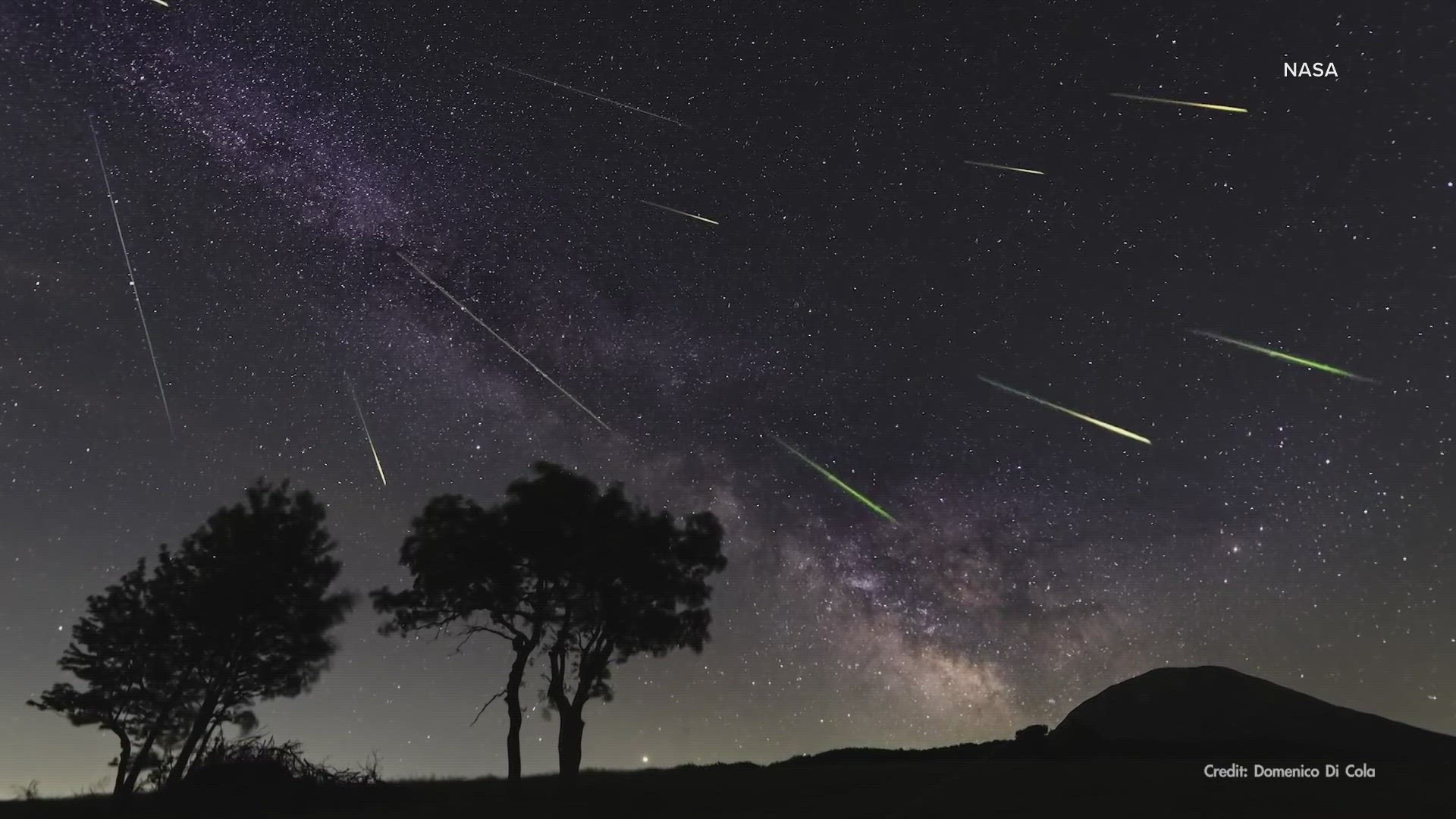TEMPLE, Texas — Editor's note: the video above originally aired at a previous date
Get ready for a show, stargazers, the Geminid meteor shower has begun.
The shower began on Nov. 19 and will last until Dec. 24, with its peak on the nights of Dec. 13 and 14.
Those who look up during the nights of the shower could catch a glimpse of a meteor, or several, streaking through the night sky. In fact, at the shower's peak, Earthsky predicts viewers could be able to see 120 meteors per hour!
Space.com says to see the shower, simply go to the darkest possible location with a view of as much of the sky as possible and look up. From Earth, the meteor shower will appear to come from the direction of the Gemini constellation, but meteors are expected to be visible across the sky.
The best time to view the shower is around 2 a.m. local time, when the shower's radiant, or the point where the meteors appear to come from, is at its highest point in the sky, according to Space.com.
The best nights to watch the shower will be Dec. 13 and 14, when the shower is at its peak, although the shower will be active until Dec. 24.
The Geminids are already considered to be one of the best meteor showers each year due to how bright and colorful the meteors typically appear, but this year's shower is forecasted to be an especially good one, as the moon will only be around 1% full, leaving little moonlight to interfere with the shower's display.
Those interested in seeing the meteor shower will not need any special equipment like binoculars or telescopes, as many of the meteors will be visible with the naked eye.
Unlike many meteor showers, the Geminid shower is actually the product of an asteroid, Phaethon. The shower is considered one of the strongest and most reliable, and Space.com says it is only getting stronger as Jupiter's gravity has pulled the stream of particles from Phaethon closer to Earth.
More stories from 6 News:

